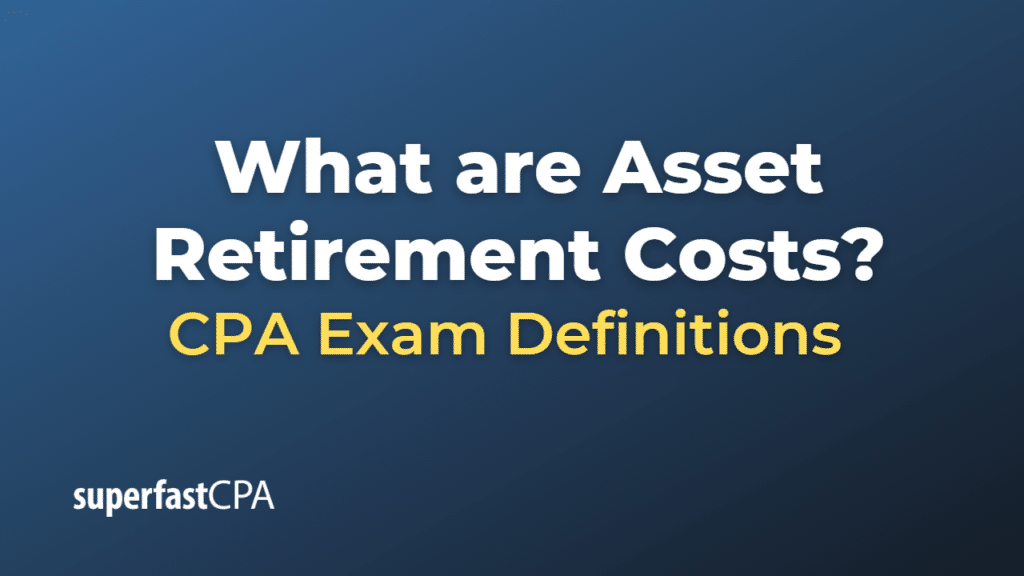Asset Retirement Costs
Asset retirement costs refer to the expenses incurred when an asset is taken out of service or disposed of, typically at the end of its useful life. These costs can include dismantling and removal of the asset, site cleanup, waste disposal, and any necessary environmental remediation.
Companies are often required to estimate and record these costs as a liability on their balance sheet when the asset is acquired or when the obligation to retire the asset arises. This liability is referred to as an “asset retirement obligation” (ARO). The corresponding asset retirement cost is capitalized as part of the asset’s carrying value and is then allocated over the asset’s useful life through depreciation or amortization.
Example of Asset Retirement Costs
Let’s consider a company that operates a wind farm with 10 wind turbines. The company estimates that each turbine will have a useful life of 20 years, after which they will need to be dismantled and removed. The company estimates that it will cost $50,000 to dismantle and dispose of each turbine at the end of its useful life.
Based on these estimates, the total asset retirement cost for the wind farm would be $500,000 ($50,000 per turbine x 10 turbines). The company would capitalize this cost as part of the carrying value of the wind farm and allocate it over the 20-year useful life of the turbines.
The company would record an asset retirement obligation (ARO) of $500,000 on its balance sheet, representing the present value of the estimated future costs. The capitalized asset retirement cost would be added to the carrying value of the wind farm and would be depreciated over the 20-year useful life of the turbines.
Each year, the company would record depreciation expense for the allocated portion of the asset retirement cost. For simplicity, let’s assume straight-line depreciation. In this case, the annual depreciation expense for the asset retirement cost would be $25,000 ($500,000 / 20 years).
Simultaneously, the company would also recognize an accretion expense related to the increase in the ARO liability due to the passage of time. This expense would be recorded as a non-cash charge in the company’s income statement.
At the end of the 20-year period, the company would incur the actual costs of dismantling and disposing of the turbines. The ARO liability would be settled, and any difference between the estimated and actual costs would be recognized as a gain or loss in the company’s financial statements.













